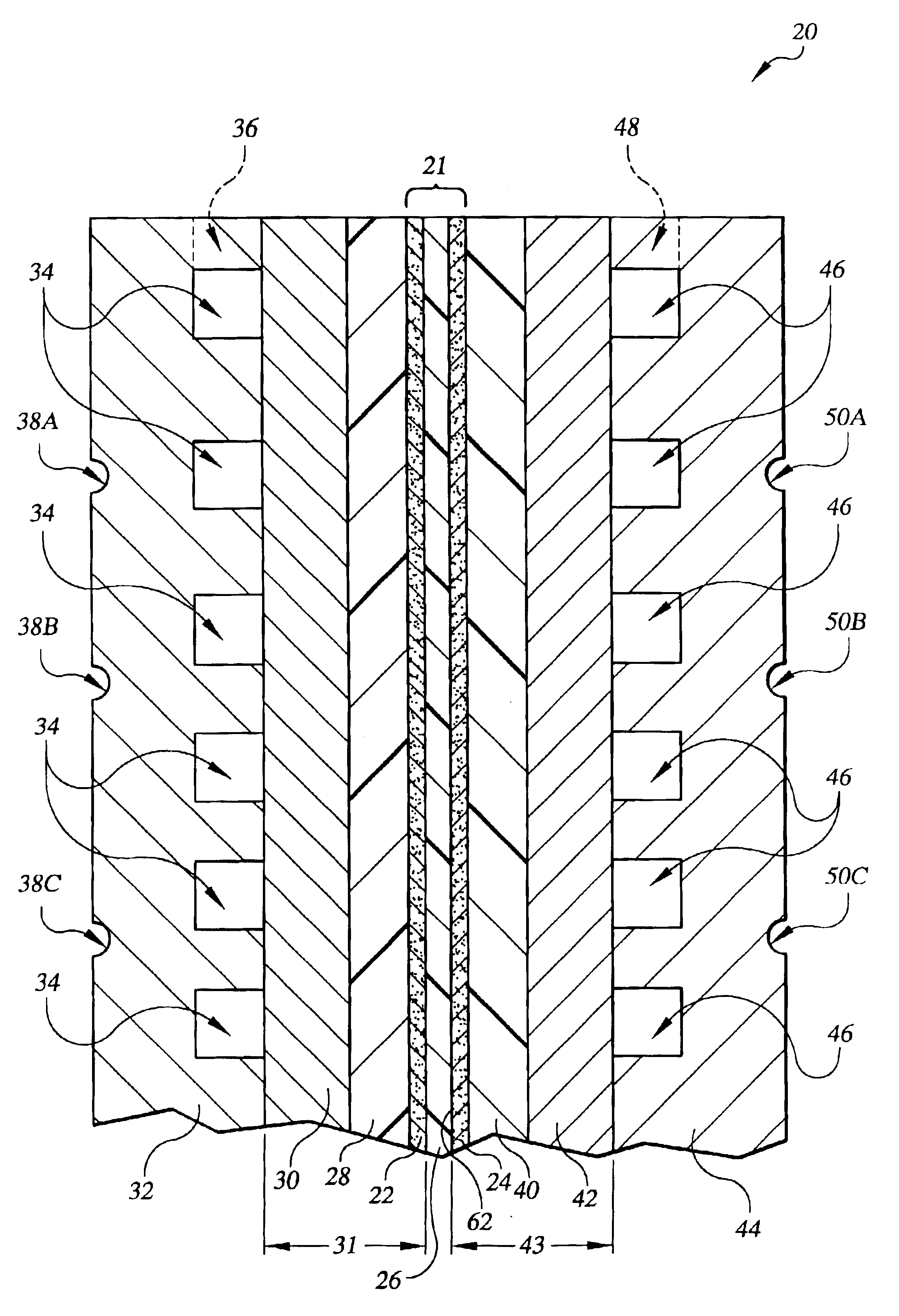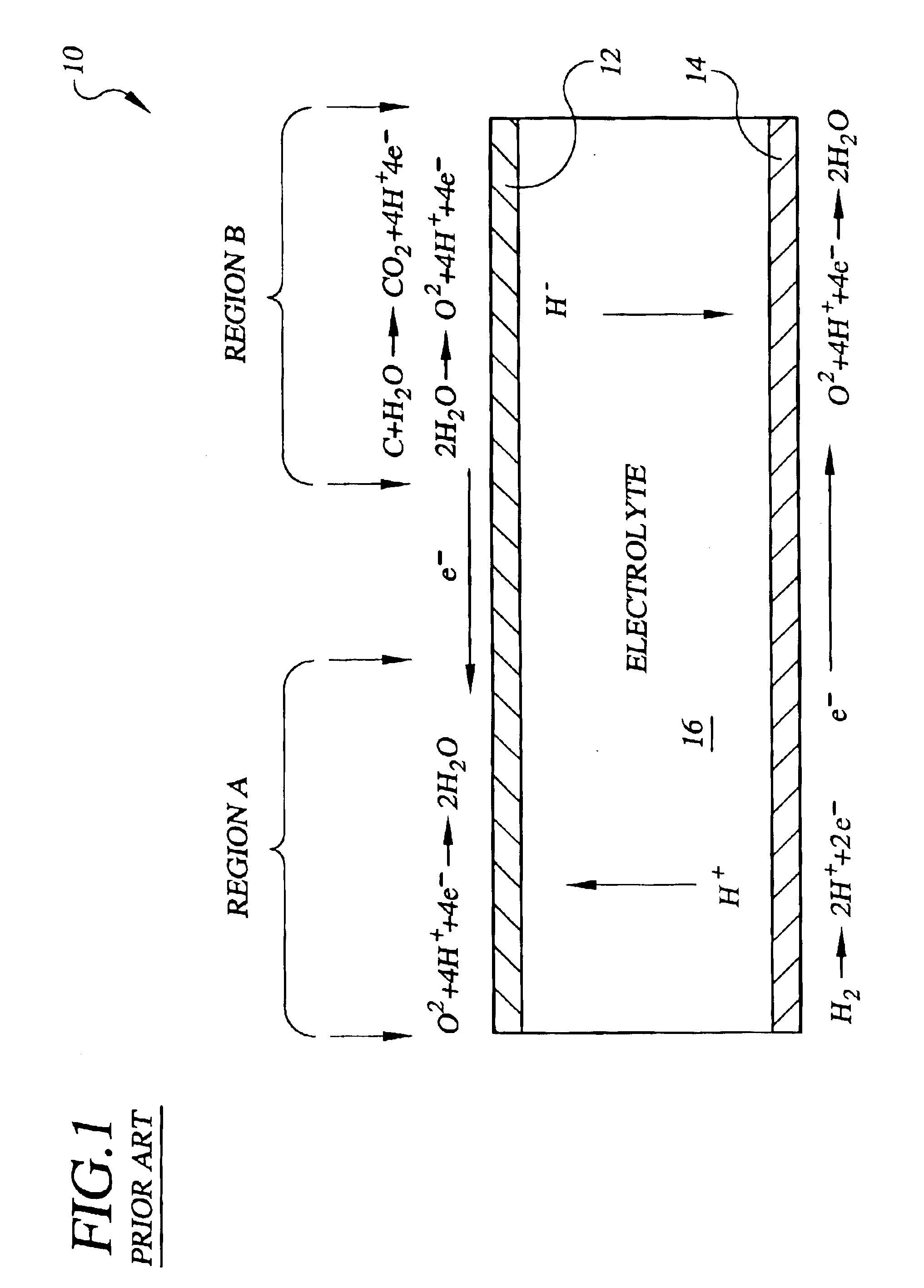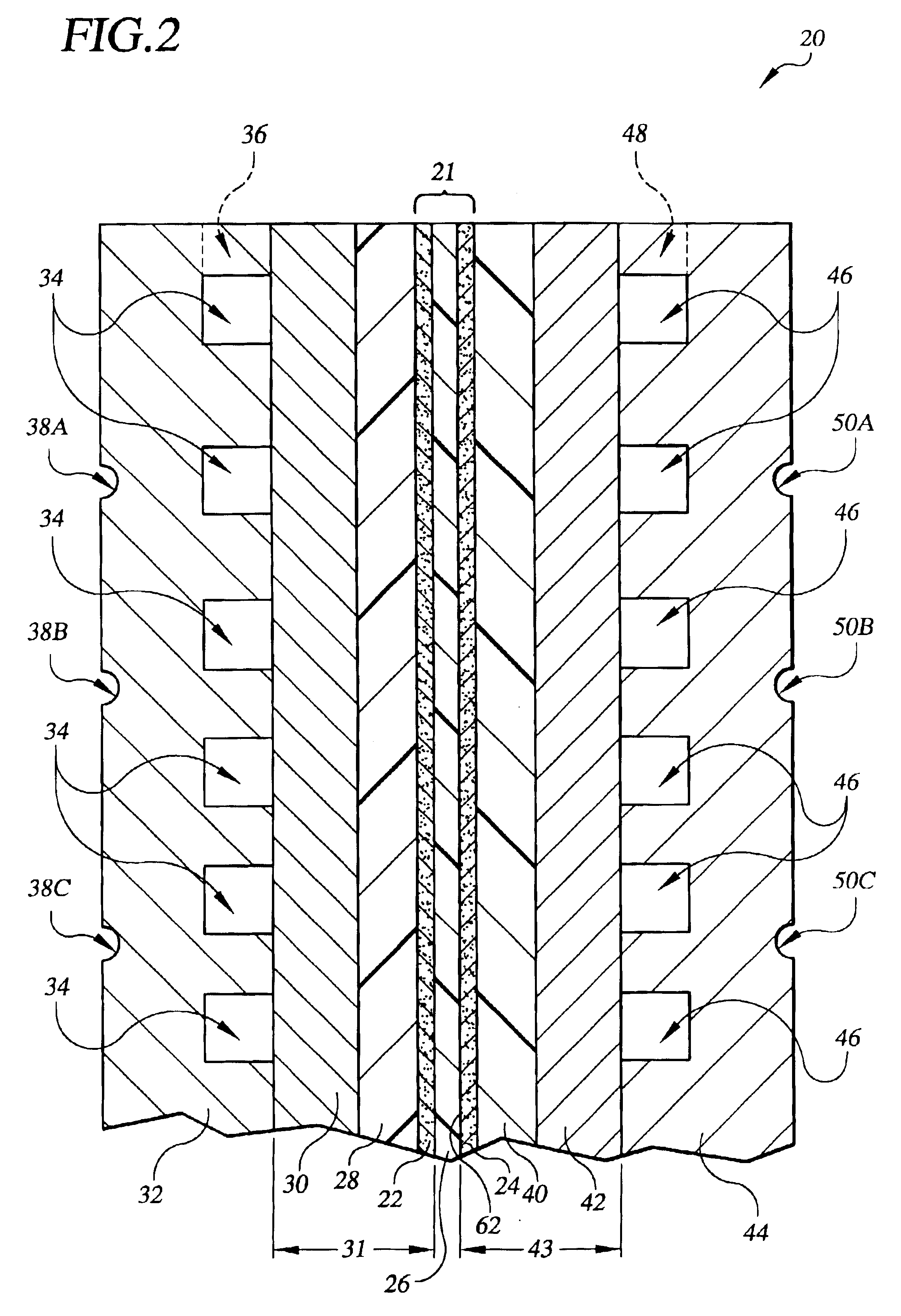Fuel cell having a corrosion resistant and protected cathode catalyst layer
a cathode catalyst, corrosion-resistant technology, applied in the field of fuel cells, can solve the problems of high corrosion area, high corrosion area, and corrosion of the cathode catalyst layer opposite the area of inadequate hydrogen, and achieve high corrosion area, minimize corrosion, and high corrosion area
- Summary
- Abstract
- Description
- Claims
- Application Information
AI Technical Summary
Benefits of technology
Problems solved by technology
Method used
Image
Examples
Embodiment Construction
Referring to the drawings in detail, a fuel cell having a corrosion resistant and protected cathode catalyst layer is shown schematically in cross-section in FIG. 2, and is generally represented by the reference numeral 20. The fuel cell 20 includes a membrane electrode assembly 21 consisting of an anode catalyst layer 22 a cathode catalyst layer 24 secured to opposed sides of an electrolyte 26. The fuel cell 20 may also include an anode catalyst layer support means, consisting of one or more porous layers for supporting the anode catalyst layer 22 and for permitting fluid flow through the anode support means. The one or more porous layers of the anode catalyst layer support means may include an anode diffusion layer 28 secured adjacent to the anode catalyst layer 22 and an anode substrate layer 30 secured adjacent to the anode diffusion layer 28. The anode catalyst layer 22, anode diffusion layer 28 and anode substrate 30 may also be characterized as an anode electrode 31.
An anode ...
PUM
| Property | Measurement | Unit |
|---|---|---|
| temperature | aaaaa | aaaaa |
| voltage | aaaaa | aaaaa |
| voltage | aaaaa | aaaaa |
Abstract
Description
Claims
Application Information
 Login to View More
Login to View More - R&D
- Intellectual Property
- Life Sciences
- Materials
- Tech Scout
- Unparalleled Data Quality
- Higher Quality Content
- 60% Fewer Hallucinations
Browse by: Latest US Patents, China's latest patents, Technical Efficacy Thesaurus, Application Domain, Technology Topic, Popular Technical Reports.
© 2025 PatSnap. All rights reserved.Legal|Privacy policy|Modern Slavery Act Transparency Statement|Sitemap|About US| Contact US: help@patsnap.com



